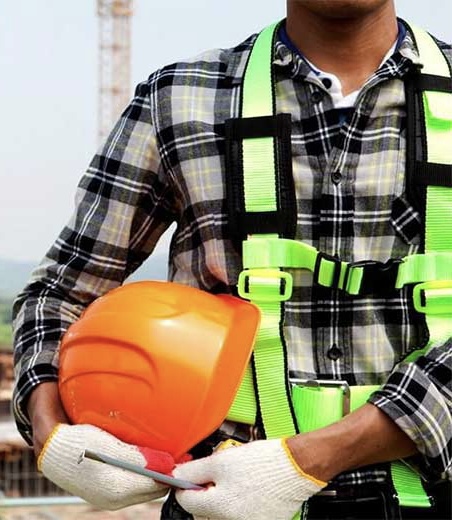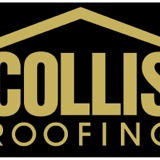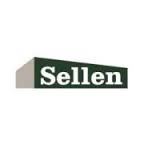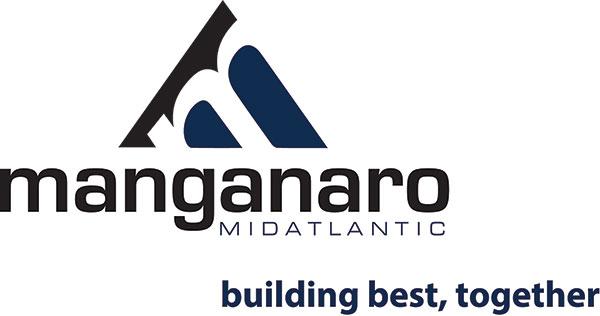Title Page
-
Job name
-
Job number
-
Job site address
-
Safety inspector
-
Branch
-
Roof height
-
Date
Rooftop dangers
-
Electrical lines and gas lines or other potential hazards on the roof have been identified and communicated to the project manager
-
All outside safety concerns have been taken into account and the project planned around them (hazardous ventilation, falling debris, power lines)
-
Safety plan has been made to facilitate recovery of potentially injured personnel in case of fall or rooftop injury
Ladder
-
Ladder is at proper angle
-
Ladder is in good working condition and is inspected before each use
-
Ladder extends past the roof edge a minimum of three feet when used to access the roof
-
Top and base of ladder are free from debris and have a system in place to redirect heavy foot traffic
-
Ladder’s load does not exceed manufacture’s rated capacity
-
Hard hats worn whenever ascending or descending the ladder
-
Ladder placed at any break in elevation greater that 19”
-
Ladders have nonconducting side rails when used near electrical equipment
-
Personnel ascending or descending the ladder face the ladder at all times with a minimum of one hand grasping the ladder
-
Personnel ascending or descending the ladder do not carry a load that could cause them to lose balance or fall
-
Ladders appear to be above OSHA minimum standards
Warning lines
-
Entryway present in warning line system
-
Entryway meets OSHA standards
-
Warning lines present around roof work area
-
Warning line system is 34”-39” from the roof surface
-
Warning lines have flags a maximum of 6’ apart
-
Warning line tensile strength is a minimum of 500lbs
-
Warning lines and stansions are able to support 16 pounds of horizontal force without tipping
-
Sections between the stanchions are unable to influence the tension of other sections
-
Points of access, material handling areas, storage areas, and hoisting areas are connected to the work area by an access path formed by two warning lines
-
Staggered pathway to roof section meets OSHA regulations
-
Safety monitor in place at all times when work outside the lines was performed
-
Safety monitor is on same plane as work being performed
-
Safety monitor is able to communicate orally with the personnel they are monitoring
-
Safety monitor is able to see all personnel that they are monitoring
-
Safety monitor is competent person who is able to recognize and warn personnel of potential fall hazards
Mechanical equipment in use
-
Lines set back 6’ from roof edge (parallel to equipment operation)
-
Lines set back 10’ from roof edge (perpendicular to equipment operation)
Mechanical equipment not in use
-
Lines set back a minimum of 6’ from roof edge
-
Warning line systems appear to meet OSHA minimum standards
Holes
-
All holes greater than 2” need a cover designed to withstand two times the intended applied weight. Must be secured and labeled (“hole”, or “cover”)
-
Holes greater that 6’ above lower levels are protected against tripping or falling into via personal fall arrest systems, covers, or guardrail systems
-
All skylights are fall rated or have proper fall protection (ie safety nets)
-
Personnel below holes are protected from falling objects
-
All holes managed with the proper fall protection means
Fall arrest
-
Anchor point able to support 5000lbs per person attached
-
D rings and snap hooks are capable of withstanding 5000lbs
-
Snap hooks used for fall arrest have a corrosion resistant finish, are locking type, and are properly sized for connection to the anchor point
-
Fall arrest system meets OSHA minimum standards
Fall restraint
-
Anchor able to support a minimum of 3000lbs per person attached
-
Fall restraints used limit free fall to 2’
-
Snap hooks and D rings used are properly sized, have a corrosion resistant finish and are capable of withstanding 5000lbs of force
-
Fall restraint equipment is inspected regularly and is in good working condition
-
Fall restraint system meets OSHA minimum standards
Equipment
-
All equipment is in good working condition
-
All generators have GFCI in good working condition
-
Equipment/material stored within flag lines secured from wind
-
Handheld tools intended to be used with a guard (ie. Saws and grinders), have guard properly in place when in use
-
Extension cords are proper gauge for tool being used
-
Extension cords and other electrical equipment connections are protected from water intrusion
-
Extension cords are free from damage
-
Internal combustion equipment exhausts are directed away from flammable materials at all times
-
Trash chute properly secured on buildings greater than 20’
-
Trash chute has proper guardrail system in place
-
Equipment and material placed in area that can properly support the load
-
All equipment is serviced regularly and meets OSHA minimum standards
PPE
-
Proper PPE worn at all times
-
PPE in good working condition
-
Harness’ are free from damage and are inspected before use
-
Hard hats are damage free and are inspected before each use
-
Respirators have fresh filters, are in good working condition, and are inspected before each use
-
Flame retardant clothing worn during grinding or when working with open flames
-
No baggy or loose clothing used around reciprocating or rotating assemblies
-
Z28+ rated safety glasses used during cutting, grinding, or any other work that could bring injury to the eyes
-
Proper hearing protection worn in high decibel areas
-
Safety equipment is in good working condition and has a recorded log of inspections
-
All PPE provided complies with OSHA minimums
Guardrails
-
Top edge of guardrail falls between 39”-45”
-
Midrails installed when there is not parapet at least 21” high
-
Top rail able to support 200lbs of horizontal or downward force at any point
-
Midrails able to support 150lbs of horizontal or downward force at any point
-
All guardrail systems meet OSHA minimum standards
Safety nets
-
Safety nets are installed 8’ past the exposed edge and installed a maximum of 25’ below the working surface
-
Mesh size does not exceed 6”x6”
-
Safety net meets 17,500 ftlb minimum impact resistance
-
Edge ropes provide a minimum breaking strength of 5000 lbs
-
Nets mounted prevent impact with structures or surfaces below and are impact tested before use
-
Forged steel safety hooks used to secure net to supports are capable of withstanding the implied forces on the net
-
Connections between net panels are able to withstand the implied forces on the net
Chemical, fire, and airborne contaminants hazards
-
Respirators provided when air quality standards fall below OSHA minimums
-
Rubber gloves worn whenever handling hazardous chemicals
-
Hazardous or flammable chemicals stored in labeled safety cans away from ignition sources
-
Hazardous or flammable materials stored away from ignition sources
-
No smoking around combustible materials or on the rooftop
-
Fire extinguishers are provided in trailers and job boxes
-
Fire extinguishers are serviced regularly and have ample pressure
-
SDS book provided on trailer and is easily accessible
-
First aid kit in trailer and job box fully stocked
-
All chemical, fire, and airborne hazards have been accounted for and equipment meets OSHA minimum standards
Third Party Protection
-
Personnel below/surrounding working area are safe from falling debris at all times
-
Toe boards capable of withstanding a minimum of 50lbs of downward/outward force
-
Toe boards are a minimum 3.5” in height with a maximum 1” space between boards, and no more than 1.25” off the working surface
-
Areas directly below holes are flagged off to prevent injury
-
Protection for personnel surrounding/below the work area meets OSHA minimum standards
Elements
-
Workers are not exposed to dangerous weather conditions
-
Working conditions meet OSHA minimum standards
Scaffolding
-
Scaffold and components able to support its own weight plus 4x the intended load applied
-
Fall protection used at heights greater than 10’
-
Scaffold secured properly from wind
-
Each platform is completely decked between the guardrails and front uprights
-
Scaffold deck able to support 4x the intended weight to be applied
-
Scaffolding erected meets OSHA minimum requirements
Hoisting
-
Hard hats worn at all times when hoisting operations are taking place
-
No part of the hoist equipment, load line, or load get closer than 20’ to any hot power lines
-
No personnel operate below an active hoist unless that person is guiding or receiving the load
-
Weather conditions are not hazardous to hoisting operations (ie. high winds, lightning, etc.)
-
The signal person is able to communicate clearly with the operator and is free from distraction
-
The signal person and operator are properly trained/licensed in hoisting operations
-
The load weight does not exceed the capacity of the equipment being used
-
All equipment used during hoisting operations is inspected regularly and is in good working condition
PFA to crane hook
-
Equipment used is capable of withstanding 5000lbs of pressure
-
Operator is informed of intended use and present at time of action
-
No load is suspended from the load line
-
All hoisting equipment and techniques meet OSHA minimum standards
Lifts
-
All airial lifts are operated with proper PPE
-
Airial lifts are serviced regularly and are in good working condition
-
Airial lift operator is properly trained
-
Telehandler operator is properly trained
-
Telehandler is in good working condition
-
Telehandler is operated with proper PPE
-
All lifts and their operations meet OSHA minimum standards












